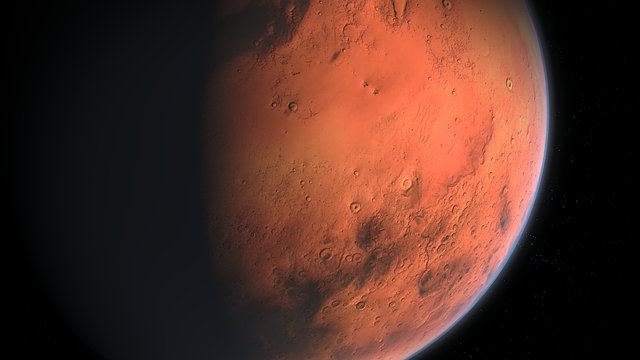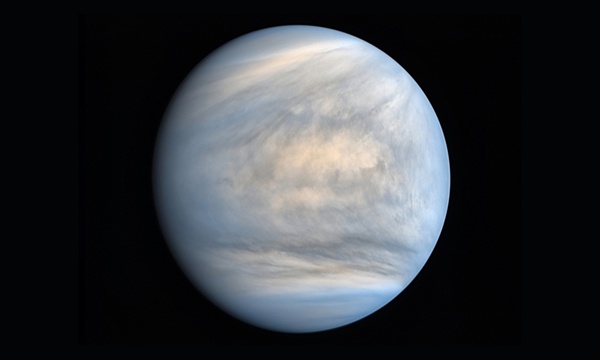*This post may contain affiliate links. This means we may make a commission if you purchase an item using one of our links*
The main difference between Mars and Venus is that Venus is both the brightest and hottest planet in our solar system, Mars has 2 Moons whilst Venus has 0, Venus is the 2nd closest planet to the Sun whilst Mars is 4th, one day on Venus takes 243 days whilst it’s 24:37 hours on Mars and Venus has an atmosphere 3,000 denser than that on Mars.
For a more thorough look at both the similarities and differences between these two l, continue reading as it’ll be covered in more detail below.
What Is The Planet Mars?
Table of Contents

Mars, also known as the red planet, is the celestial object that’s the front runner in our entire solar system to become a possible new home for us if terraformed. It is also the 4th farthest planet from the Sun and is one of 4 main line
terrestrial planets (not including Pluto) in our solar system.
This means that one year on Mars will take roughly 687 Earth days and a day on Mars is roughly the same as Earth at 24 hours and 37 minutes. It’s axial tilt is also very similar to that of Earth where it is positioned around 25 degrees to the right.
It may not be the largest terrestrial world in our solar system as its diameter is only 6,779km but, it does have the most moons amongst the normal terrestrial planet where two, namely Deimos and Phobos, are currently orbiting the red planet.
Like Earth and the other terrestrial worlds, Mars does have an atmosphere, certainly more visible than that on Mercury but, when compared to Earth’s it is merely 1% of its volume.
As a result it is more susceptible to larger debris striking its surface and is unable to trap in too much heat either. This is why it’s on the colder side with a temperature of around -65 degrees Celsius on average. On the contrary its core is significantly hotter at 1,350 degrees Celsius.
Mars is probably the most explored planet outside of our own, with a multitude of rovers like Sojourner (1997–1997), Opportunity (2004–2018), Spirit (2004–2010), Curiosity (2012–), and Perseverance (2021–) that have landed on the Martian soil to explore it.
Billionaires like Elon Musk and even Jeff Bezos are trying for an opportunity to genuinely have astronauts land on the Martian soil, possibly as early as 2029 so, Mars clearly has a lot interested in its terrain, as a potential substitute for Earth in the future.
What Is The Planet Venus?

Venus is the 2nd closest planet to the Sun and is often regarded as Earth’s sister planet. It’s very close to our Earth in size where its diameter is 12,104km. This is just over 600km less wide than our home planet.
Unlike all the planets further outside the Sun’s orbit, Venus has no moons orbiting it. The most probable reason for this is due to its closer proximity to it, which means that smaller objects orbit the Sun as opposed to Venus.
Venus is also the hottest planet in our solar system where its surface temperature is 475 degrees Celsius. This is due to a number of factors, like the thicker atmosphere, close proximity to Sun, the reasons for which have been explained in more detail here.
It’s core is hot too, similar to that of the ice giants and Earth, where it stands at 5,200 degrees Celsius.
As a result of this thicker atmosphere, Venus is also able to reflect a lot more of the light the Sun projects at it, making it both the hottest and brightness planet in our solar system. This is why for the longest time, and even till this day Venus is often referred to as the morning or evening star.
The thicker atmosphere is mostly compromised of carbon dioxide, and thick clouds of sulfuric acid. This does result sulfuric acid rain on the planets surface, which of course is very corrosive.
Being so close to the Sun also mean its orbital cycle is much shorter. It takes Venus 225 days to complete a full cycle, on the contrary a single day is actually longer than this where it takes around 243 days for a full rotation around its axis.
This is partially down to its distance from the Sun and the thick atmosphere surrounding this terrestrial planet. The axial tilt on Venus is also different from the other planets in our solar system where it is practically straight at 3 degrees.
All in all this is certainly one of the most interesting planets in our solar system and in many peoples eyes, could very well have supported life in the past based on how close its shape and size is to that of Earth.
How Are Mars And Venus Similar
Both Mars and Venus do share quite a few common features, which in this case includes the following:
- Both have a hotter central core.
- Both are a spherical in shape.
- Both are terrestrial planets.
- Both have an atmosphere and a rocky surface.
- Both orbit the Sun in a circular pattern.
- Neither are tidally locked to the Sun.
- Both have no rings surrounding them.
Differences Between Mars And Venus
As for the differences between the two, they include the following:
- Mars has 2 moons whereas Venus has 0.
- Mars is the 4th farthest planet from the Sun whilst Venus is the 2nd closest. As a result it takes Venus 225 days to orbit the Sun whilst Mars does so in 687 days.
- Mars is far cooler with a surface temperature of around -65 degrees Celsius whilst Venus is the hottest planet in our solar system with a surface temperature of 475 degrees Celsius. Venus is also the hottest world in our solar system.
- Mars is smaller than Venus with a diameter of 6,779km compared to Venus’ 12,104km.
- Venus is the brightest entity in our solar system.
- Venus has a far thicker atmosphere than Mars where it is literally 3,000 times denser.
- Venus has the longest day amongst the planets in our solar system where it can take it roughly 243 days to complete a cycle. Mars on the other is slightly longer than Earth at 24 hours and 37 minutes.
- Mars has a mostly rocky, pasty surface whilst Venus is made mostly of volcanoes and magma.
- Mars has an axial tilt of 25 compared to the 3 degrees on Venus.
- Mars is a red color whilst Venus is a yellow/white color.
- Venus has a core temperature of around 5,200 degrees Celsius as opposed to the 1,350 degrees Celsius on Mars.
- Mars has a mass of 6.39 × 10^23 kg compared to Venus’ of 4.867 × 10^24 kg.
Summary
Mars and Venus do have their fair share of commonalities such as their terrestrial nature meaning they have an atmosphere and a solid surface, the fact they both orbit the sun, have a core and so forth.
However, they differ significantly too whether it be their size, temperature, the length of a single day their, the number of moons orbiting them, brightness and so on. Despite all their similarities and close proximity to our home planet, the two are still distinct enough that only Mars is in consideration for a terraforming expedition.

